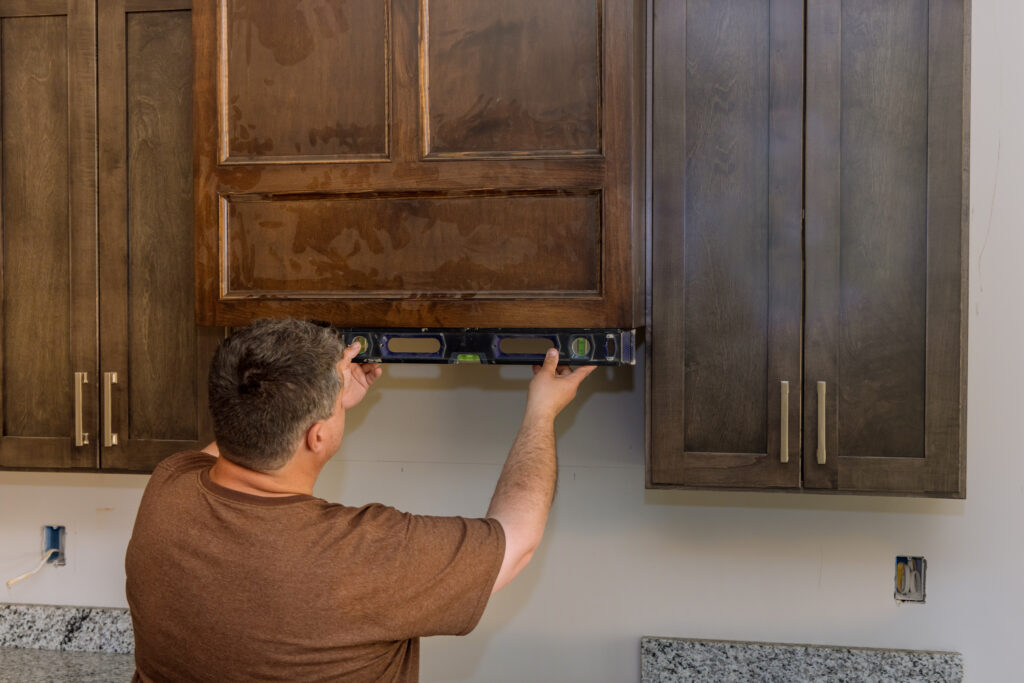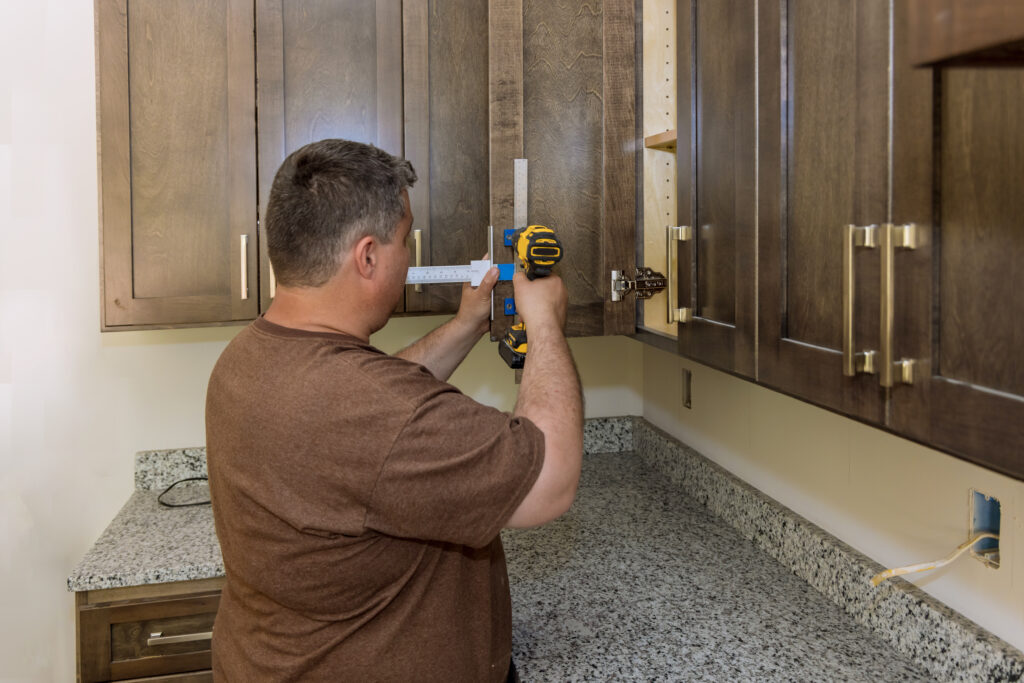Cabinet refacing gives your kitchen a fresh, polished look using what you already have. For most homeowners, it’s the sweet spot between affordability, speed, and style. And if you’ve heard of cabinet refinishing, it’s easy to get the two confused.
Refinishing is more about sanding, staining, or painting. Refacing, on the other hand, completely changes the front-facing parts doors, drawers, and the cabinet box faces while leaving the bones of your kitchen intact.
So, What Exactly Is Cabinet Refacing?
Picture this: you keep your cabinet boxes in place, but replace the doors, drawer fronts, and hardware. Then, you apply a matching veneer or laminate over the exposed surfaces of the boxes so everything looks cohesive.
The result? A brand-new kitchen aesthetic without the mess, time, or budget required for custom cabinetry. Many homeowners looking into kitchen cabinet refacing are surprised at how dramatically it can improve their space.

Why Homeowners Love Cabinet Refacing
There are plenty of reasons this method has become so popular and it’s not just about saving money (though that helps).
- It’s usually 30% to 50% cheaper than replacing cabinets altogether
- Projects can often be completed in just a few days, not weeks
- You get an upgraded look without reconfiguring your kitchen layout
- It’s more environmentally friendly, less waste, fewer materials
If you’re worried about the cabinet refacing cost, remember that it’s still one of the most affordable ways to make your kitchen feel new again. You won’t need permits or major construction, and you avoid the domino effect of a full gut job.
The Step-by-Step Cabinet Refacing Process
Refacing isn’t overly complex, but it does require some precision. Here’s how the process unfolds from start to finish:
- Evaluate the Current Cabinets
First things first: your cabinets need to be in good shape structurally. If there’s water damage, sagging, or deep cracks, you’ll need cabinet repair before moving forward. Refacing won’t fix internal problems, it only updates what you see on the outside.
- Remove Doors, Drawers, and Hardware
All the doors and drawer fronts are taken off. Hinges, knobs, and pulls are also removed to prepare for the transformation. You’re left with just the cabinet frames.
- Prep and Clean the Cabinet Boxes
Next, the frames are sanded lightly and cleaned. A bonding agent may be used depending on the type of material you’re working with. Clean prep means the new veneer will adhere smoothly and last longer.
- Apply Veneer or Laminate
This step is what gives the cabinet resurfacing its magic. You cover the visible parts of the cabinet boxes with a thin sheet of wood veneer or laminate whichever fits your desired style. It’s applied carefully to ensure a clean, seamless finish.
- Install New Doors and Drawer Fronts
This is where you really start to see the transformation. Choose modern designs, colors, or wood finishes that match your kitchen’s vibe. Whether you prefer flat fronts, shaker styles, or something more traditional, the new pieces bring it all together.
- Add New Hardware
Small detail, big impact. Swapping out old hinges and pulls for fresh, modern hardware can elevate the final result. It’s the finishing touch that makes your cabinets pop.
- Final Inspection and Touch-Ups
Once everything’s installed, a few small adjustments or cleanups are made. You walk away with a refreshed kitchen without demolition, dust clouds, or unexpected delays.
DIY vs. Hiring a Pro
You might be wondering: can you handle this project on your own? Short answer yes, DIY cabinet refacing is possible. But should you? That depends. Doing it yourself kitchen cabinet refacing demands accurate measuring, sharp cutting tools, and a lot of patience.
If you’re experienced with hands-on work and have time to spare, go for it. But for many, working with local kitchen cabinet refacing experts or kitchen cabinet refacing contractors ensures fewer headaches and a more polished finish.
Things to Consider Before You Reface
Refacing is great, but it’s not a one-size-fits-all solution. Be aware of some common pitfalls or questions that come up:
- Is your kitchen layout functional? Refacing won’t change it.
- Are your cabinet boxes solid? If not, they’ll need structural cabinet repair.
- Want to add cabinets or rearrange them? Refacing doesn’t allow much flexibility.
- Is your goal resale value? Modern styles may pay off more than custom ideas.
Also, think about material choices. Knowing the problems with refacing kitchen cabinets upfront helps prevent disappointment later.

Before and After: A Real Transformation
There’s something satisfying about seeing the before and after refacing cabinets moment. What looked worn, chipped, and outdated can suddenly appear sleek and high-end without altering the bones of the kitchen.
This transformation often boosts home value, impresses guests, and gives you a space you’re proud of all without months of construction.
Conclusion:
If you like your current layout, your cabinets are structurally sound, and you want a new look without starting from scratch, then yes, refacing kitchen cabinets is probably the right move.
But if you’re hoping to move plumbing, change layouts, or replace broken boxes, you might be better off with a full remodel or custom install. That said, custom cabinet refacing can still be an option if you want semi-custom doors, premium finishes, or more control over the final design.
Frequently Asked Question
How much does cabinet refacing cost on average?
Most homeowners spend between $4,000 and $9,000 depending on kitchen size, materials, and labor costs. It’s still significantly less than full cabinet replacement.
Can I do cabinet refacing myself?
Yes, diy refacing kitchen cabinets is possible. But it requires patience, skill, and tools. A mistake in measuring or cutting can cost more in the long run.
What’s the difference between cabinet refinishing and refacing?
Cabinet refinishing involves repainting or staining existing surfaces. Cabinet refacing replaces the doors and covers the boxes, offering a more dramatic upgrade.
Is refacing a good long-term solution?
If done correctly, yes. Refaced cabinets can last 10–20 years or more, especially when high-quality materials are used.
Does refacing add value to my home?
Absolutely. A refreshed kitchen especially one that looks custom adds appeal and can improve resale potential.